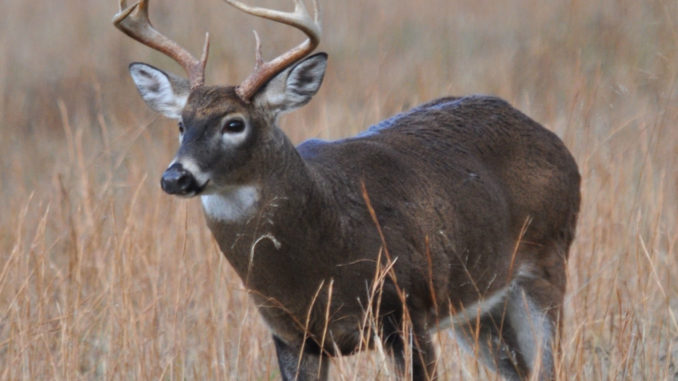
North Carolina game lands offer hunters plenty of options.
North Carolina was lucky to have a far-sighted legislature that created the N.C. Wildlife Resources Commission in 1947.
Since that time, the agency’s main mission has been to manage the state’s fish and game, and it’s always known the best way to do that is to create and preserve habitat in the Tarheel State.
The Commission’s game lands have been its answer to public desires to have homes for fish and game that wouldn’t be disturbed by human development. From the mountains to the sea, sportsmen are within easy driving and sometimes walking distance of properties where they can hunt, fish or simply enjoy the outdoors.
With the addition of national forest lands, the agency manages slightly more than 2 million acres of public land.
Here’s our annual look at the state’s top game lands for wildlife and sportsmen.
EAST
Deer
Best game-land bets: Lower Roanoke River Wetlands, Croatan, Holly Shelter, Alligator River, Lantern Acres, Van Swamp, White Oak River, Goose Creek, Devil’s Garden Tract of Neuse River.
The Lower Roanoke River National Wildlife Refuge is a good choice as any public-hunting lands to see a trophy whitetail.
“The permit system provides quality hunts,” said David Turner, a management biologist for the Commission. “The Lower Roanoke River has a lot of agricultural fields surrounding it, and we have co-op farmers we allow to plant mostly small grains and peanuts.”
The game land has almost 300 acres of fields.
Turner rated Alligator River and Van Swamp as tops for hunters who run deer with dogs. Both have extensive roads for access.
“Both game lands are OK for stand hunters, too, because a lot is forested,” said Turner, who ranked Lantern Acres in Washington and Tyrrell counties fourth because of food plots, forest roads planted in clover and openings seeded in oats.
Massive Croatan National Forest sprawls across Carteret, Craven and Jones counties and likely has the most whitetails of any eastern game land.
The Commission plants oats and rye food plots at Croatan near Pelletier and Long Point Landing. White oak ridges exist near the Havelock ferry terminal.
“It has plenty of deer,” said Richie Clark, another Commission biologist.
“It has big drainages that can be reached by boat at Bryce’s Creek and the White Oak River.”
Clark rated Holly Shelter as perhaps the No. 2 deer game land in his region. “It has some good hardwood ridges and disabled-hunter blinds near oat fields,” he said.
Although Goose Creek along the southern shore of the Pamlico River is difficult to hunt because of swamps, it has some hardwood areas.
The Devil’s Garden portion of the Neuse River Game Land has “some nice bottom land,” Clark said, “and places to land small boats.”
Green Swamp and Juniper Creek in Brunswick County have decent deer hunting.
Bear
Best game-land bets: Buckridge, Alligator River, Croatan, Holly Shelter, Goose Creek.
Two game lands in the east-central portion of the state are adjacent to the state’s top private-land bear habitat.
“Buckridge and Alligator River; that’s bear country,” Turner said. “It’s all woodlands and is dog-hunted quite a bit. There’s a good bit of roads, which helps hunters.”
Alligator River’s 13,877 acres are mostly south of US 64 and bordered on the east by the river of the same name and extensive trails allow access to downed bears. But because of its size and proximity to private land that holds bears, Clark said Croatan is his region’s top bruin spot.
“It’s good, but it gets a lot of (hunting) pressure,” he said.
Clark ranked huge Holly Shelter (64,743 acres) in Pender County second for black bears.
“North of Bear Garden Rd. is an area that requires a permit to hunt bear or deer,” he said. “There’s also no bear or deer dog-hunting allowed at Pender 4 (tract) and at greentree impoundment tracts.”
Small game
Best game-land bets: Holly Shelter, Croatan, Stones Creek, Lantern Acres, Chowan Swamp, Lower Roanoke River Wetlands, Van Swamp.
Holly Shelter has more quail than any game land in Clark’s region, “and numbers are up from last year,” he said.
Commission staff members also have done a lot of cooperative work to create early successional habitat, planting annuals and working on field borders.
“We’ve made a lot of good habitat for rabbits and quail,” Clark said. “Holly Shelter also has seen more work.”
Both game lands contain fox squirrels as well as gray squirrels.
The Commission also worked with Quail Unlimited to do controlled burns and longleaf pine restoration at Stones Creek.
“Lantern Acres has good rabbit hunting because we’ve also done a lot of small-game management there,” Turner said. “It has a few quail.”
Parts of Chowan Swamp Game Land in Hertford County have better rabbit numbers than the portion in Gates County.
“The Lower Roanoke River has certain good rabbit areas, but I wouldn’t come across the state for quail there,” Turner said.
Lower Roanoke River also features squirrels at its bottom-land hardwoods, and it has several dove fields.
“The (season’s) first four dove hunts are by permit lottery draw,” Turner said. “After that, they fall under point-of-sale permit hunts.”
Van Swamp has bottom-land hardwoods and also contains squirrels.
Waterfowl
Best game-land bets: Goose Creek, J. Morgan Futch, Lower Roanoke River, Gull Rock, Suggs Mill Pond, White Oak River (impoundment), Croatan (Catfish Lake), North River, Lantern Acres, Currituck.
Clark has worked at Goose Creek the past 11 years and said the Campbell, Smith and Spring creek impoundments should be the best three of the seven on either side of Goose Creek.
“The smaller impoundment at Hobucken can be good late in the season,” he said, but he isn’t optimistic about Pamlico Point because of drainage-system problems.
“If I were going this season, I’d pick two or four sub-impoundments with the best-looking vegetation,” he said. “At others (grasses) probably won’t germinate because of flooding.”
In his region, Turner said the 15 impoundments at permit-only J. Morgan Futch in Tyrrell County should provide the best waterfowling.
“But the format has changed this year,” he said. “Late-season hunts will be offered as blinds and not zones. For example, in the past if you asked to hunt Zone 3, this year you’d ask to hunt Blind 15.”
Hunt dates and blind choices will be available Sept. 1 at www.ncwildlife.org or at wildlife service agents.
Turner said Lower Roanoke River permit-only waterfowling can be excellent or sporadic, depending upon the river’s level. If shoreline swamps have water, they’ll attract mallards and wood ducks while impoundments will have wigeon, pintails and Canada geese.
“Gull Rock (three sections near Fairfield, Engelhard and Swan Quarter covering 34,446 acres) doesn’t require permits, but the hunting hasn’t been that good,” he said.
The White Oak River impoundment at Stella is a good waterfowl area that draws puddle ducks, wigeon and gadwall, Clark said, along with 700-acre Catfish Lake inside Croatan National Forest.
“The Lost River impoundment at Holly Shelter and the Lodge Road impoundment have Japanese millet and ring necks, teal and wood ducks usually show up,” he said.
Clark said Holly Shelter’s dove fields lure “a ton of” Canada geese after the Commission plants winter wheat.
North River and Lantern Acres also attract some waterfowl.
The Commission assigns nine blinds at Currituck National Wildlife Refuge on a permit-draw system, while Currituck Banks has four permit-only blinds, three at Currituck Sound and one at Cedar Bay.
Suggs Mill Pond in Bladen County has five impoundments near Horseshoe Lake, and hunters usually see woodies, occasional mallards, pintails, ringnecks, teal and black ducks.
PIEDMONT
Deer
Best game-land bets: Jordan, Upper Roanoke River Wetlands, Butner-Falls of Neuse, R. Wayne Bailey/Caswell, Shearon Harris, Uwharrie, Pee Dee River, Shocco Creek, Embro.
Similar to the classic movie “Casablanca,” it’s easy to round up the usual suspects for deer at Piedmont game lands.
Leading the list is 40,937-acres Jordan Game Land that surrounds Jordan Lake.
“Over the years, a large number of deer have been harvested there,” said Chris Dawes, a Commission biologist. “It has good soil and minerals to produce some nice bucks, and it also has the either-sex maximum deer season.”
Jordan annually draws deer hunters from the Raleigh-Durham area, plus western North Carolina hunters after their season ends in early December.
Dawes said the Upper Roanoke River Wetlands is his No. 2 deer pick.
“It’s got a riverine system (Roanoke River), bottomland hardwoods and a combination of traditional uplands hardwoods and pines,” he said.
Because required permits control access, Upper Roanoke River offers better quality deer hunts, he said.
At No. 3, he picked Butner-Falls of the Neuse, 41,115 acres that hug the shoreline around the lake that stretches from the western Raleigh city limits to Durham.
Butner-Falls has hardwood ridges, stands of pines, power-line cut-throughs and local agricultural fields.
“More than 600 acres of fields are managed at Butner-Falls,” Dawes said, “and we also have linear firebreaks planted in a combination of wheat, clover and sometimes rye (in winter).”
He rated the R. Wayne Bailey/Caswell GL third because “it’s got a little more (varied) topography than Jordan or Butner-Falls. It also gets less (hunting) pressure because the other two are six-day-a-week areas while Caswell is three days per week (Monday, Wednesday, Saturday).”
Caswell’s habitat includes red and white oak hardwoods, pines and lots of bottomland.
Dawes ranked the 50,189 acres of Uwharrie National Forest as the No. 4 Piedmont deer game land. Dozens of units are scattered across Davidson, Montgomery and Randolph counties.
The 6,829 acres at Pee Dee River Game Land extend along either side of the river in Anson, Montgomery, Richmond and Stanly counties and earn a No. 5 rating.
“Some really big deer are killed in that area,” Dawes said. “Most of (the game land) is at riparian (stream bank) areas with pines and hardwoods.”
The two northernmost units of the game lands are on either side of Lake Tillery’s dam, and the west bank includes an archery-only zone. Below the dam, several more units are scattered on either side of Blewett Falls Lake, and a final unit is southwest of Rockingham at the Richmond County side of the river.
Dawes also mentioned Embro (Halifax and Warren counties) and Shocco Creek (Franklin, Halifax, Nash, Warren counties) game lands as good deer areas.
Shearon Harris Game Land in Chatham, Harnett and Wake counties surrounding Shearon Harris Lake also has whitetails.
“It has the same type of habitat as Jordan Lake, only smaller,” he said.
Second Creek game land (1,140 acres) in Rowan County has more agricultural land percentage-wise than most other piedmont game lands.
“It has some wood edges that make (the fields) good places to see deer,” Dawes said.
Small game
Best game-land bets: Embro, Shocco Creek, Butner-Falls, Second Creek, Sandhills, Uhwarrie, R. Wayne Bailey, Upper Roanoke River, Jordan.
Game land dove fields attract birds and hunters during early September.
“Butner-Falls has eight fields, including a couple of large ones,” Dawes said. “There are 400 acres of fields down the peninsula that contains Brickhouse Road.”
The Brickhouse Road field is the Commission’s largest public-lands dove field at 88 acres, but the Flat River field has 45 acres and the Olive Grove Rd. field contains 29 acres. Dove fields are planted in corn, buckwheat, millet and sunflowers.
Jordan Lake, with seven fields seeded with millet, milo, sunflowers and buckwheat, has a 22-acre dove field off NC 751. Other fields range from four to seven acres.
Butner-Falls and Jordan dove fields also are good spots to find rabbits later in the season.
“Until they’re flooded later in the year, the waterfowl impoundments at Butner-Falls have good numbers of rabbits,” Dawes said.
Embro and Shocco Creek have young pine plantations that have been control-burned and provide plenty of food and cover for rabbits.
“Jordan, Butner-Falls, Caswell, Upper Roanoke River and Uwharrie have plenty of hardwoods and gray squirrels,” Dawes said. “Caswell also has dove fields.”
Second Creek contains managed fields and rabbit habitat while the Sandhills has some quail and rabbits. Sandhills is the only piedmont game land with fox squirrels.
Waterfowl
Best game-land bets: Butner-Falls, Jordan, Harris. Upper Roanoke River Wetlands.
Butner-Falls is the top Piedmont game land for waterfowl because of eight impoundments.
“Butner-Falls has managed sub-impoundments planted with agricultural crops,” Dawes said. “Green-tree impoundments are flooded (during waterfowl seasons).”
The Commission floods both types of impoundments a few days before the early (three-day October) waterfowl season, but during September unflooded sub-impoundments are dove-hunting areas. However, dove hunters must use non-toxic (no lead) shot loads.
During waterfowl seasons, flooded greentree impoundments draw wood ducks (because of fallen acorns) while the open sub-impoundments attract mallards, blue- and green-wing teal (especially early in the season), ring-necked ducks and woodies.
“Jordan Game Land also has (seven) green-tree impoundments, but only four are flooded each year,” Dawes said. “They mostly attract wood ducks, but also a few mallards and black ducks.”
No permits are required to hunt Falls and Jordan greentree impoundments, but hunters need permits at the more open sub-impoundments except during the three-day early season.
The Commission plants corn, milo, brown top and Japanese millet and buckwheat at sub-impoundments. Some have only moist-soil vegetation, such as smart weed.
The Commission also manages waterfowl hunting at Shearon Harris Lake.
“(The lake) has ring necks and some scaup and is a first-come, first-served area,” Dawes said. “Permanent blinds aren’t allowed.”
The Upper Roanoke River Wetlands has beaver ponds off the main river that hold ducks.
“They stay flooded most of the year,” Dawes said, “and have woodies and mallards. Fields on either side of the river also pull in a lot of Canada geese.”
WEST
Deer:
Best game-land bests: Green River, Johns River, Sandy Mush, Cold Mountain, Needmore, Dupont State Forest, Pisgah, Nantahala.
Deer hunting in mountain game lands should be better than 2012, especially in the northwestern region where an outbreak of Epizootic Hemorrhagic Disease decimated whitetails.
“The whole work area (in the northwestern mountains) was affected by EHD,” said Commission biologist Kip Hollifield.
The deer harvest dropped 20 percent last year in the northwest. The percentage of quality bucks likely will drop during 2013 because male deer require three to four years to produce impressive antlers.
“Green River Game Land probably will be our best deer area,” Hollifield said of the 14,109-acre public area is in Henderson and Polk counties. “It’s had a lot of habitat management, prescribed burning and timber management, and it’s got a good food-plot program.”
Green River has 70 food-plot acres.
Hollifield rated Johns River (3,870 acres, Burke County) as the No. 2 deer region because of its piedmont-like habitat.
“It’s got rolling terrain and creek bottoms and formerly was a hunting lease part of a Crescent (Bank) land management lien owned by Duke Energy,” Hollifield said. “It’s got 30 acres of fields and one tract – not for general public hunting but planted with corn – is reserved for disabled and youth hunters.”
David Stewart of Chambers Cove is the Commissin’s southern mountains management biologist; he ranked Sandy Mush Game Land as that region’s top deer area.
“Sandy Mush has a lot of open territory that was farmed, hayed and had a lot of pasture land,” Stewart said. “Since (the Commission) got that property, we’ve converted the fescue to native and warm-season grasses, and we’ve done a lot of annual plantings.”
Stewart rated Cold Mountain as the No. 2 deer spot because prescribed burns have created openings for wildlife seeded with clover.
Stewart rated Needmore Game Lane as a unique area because “it runs along a corridor of the Little Tennessee River and has a lot of bottom land that historically was cleared and farmed,” he said. “We’re managing native openings and doing some burns.”
The Commission also has planted turnips, which Stewart said deer love.
“Last year, we had a bad mast crop,” he said. “We planted turnips and wheat and the deer dug up the turnips.”
The Nantahala Game Lands are so vast, he said, that “hunters need to do a little more homework to find deer.”
Dupont State Forest in Henderson and Transylvania counties is a permit-only area surrounding Lake Julia.
“It’s got corn, clover and some maintained wildlife openings that attract deer, but it gets a lot of other recreational users such as hikers, bikers and horse riders,” Stewart said.
Bear
Best game-land bets: Pisgah National Forest, Nantahala National Forest, Cold Mountain, Toxaway.
Nearly all game lands from Brevard to Crossnore have some bears, but Hollifield rated Pisgah National Forest at the top.
It has seven sanctuaries where bears have prospered and expanded their range.
“It’s mostly dog hunting (for bears in the West), and we get a lot of people from Tennessee, Kentucky and Virginia and other states (as visiting hunters),” he said.
Nantahala supplies most of the bears in the southern Appalachians, Stewart said.
“Most of the folks over here hunt with hounds and need big acreages,” he said.
Stewart said Cold Mountain has a few bears, and Toxaway is mostly mature hardwoods “but it’s bordered by Gorges State Park (a de facto bear sanctuary).”
Small Game
Best game-land bets: South Mountains, Sandy Mush. Needmore, Cold Mountain, Nantahala, Pisgah.
“Nearly all the game lands up here are pretty good for squirrels,” Hollifield said. “Hardwood ridges are good places to try.”
Grouse hunters should hunt sections of Pisgah Game Land that border Tennessee, he said.
“There won’t be many grouse at other game lands until the feds allow more (timber) management,” Hollifield said.
Out of a million acres in forest service land, less than one percent is early-successional habitat, Stewart said.
“That’s what grouse and a lot of species need to survive and thrive,” he said.
Sandy Mush has several dove fields, but permits are needed to hunt during the season’s first segment.
“It’s got 40 acres of dove fields, and dove hunting is a big draw,” Stewart said. “It also has a few rabbits as does Needmore. And there are a few cutover areas at Cold Mountain (for rabbits).”
Waterfowl
Best game-land bet: Sandy Mush.
Although there’s not much habitat to attract waterfowl at western game lands, scattered beaver ponds will attract wood ducks.
“A few people hunt ducks at Sandy Mush Creek,” Stewart said. “The beaver ponds? You have to look for them.”

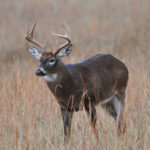
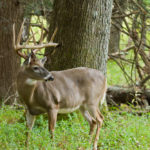
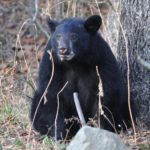
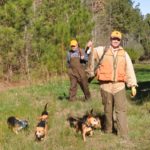
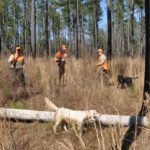
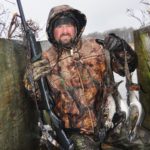

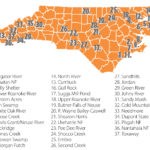



Be the first to comment